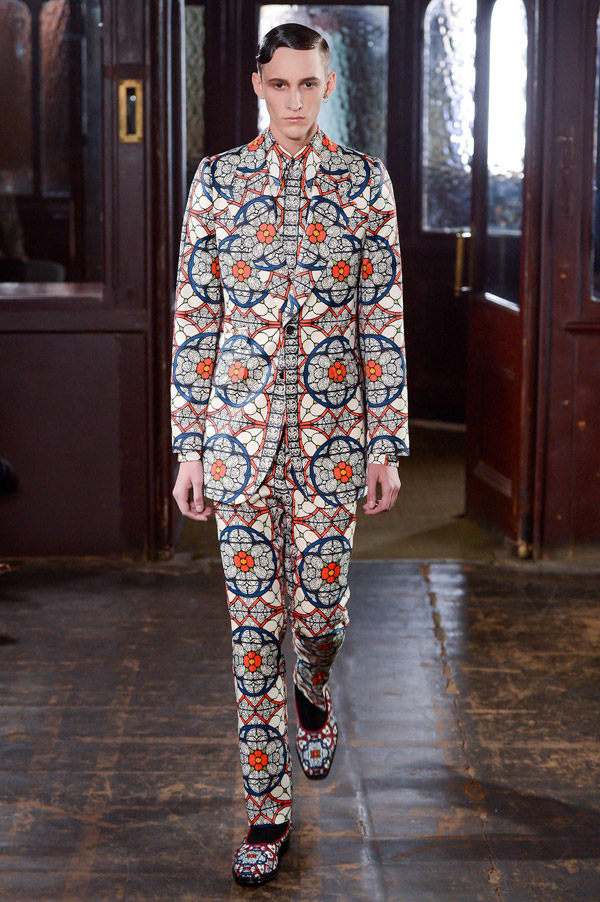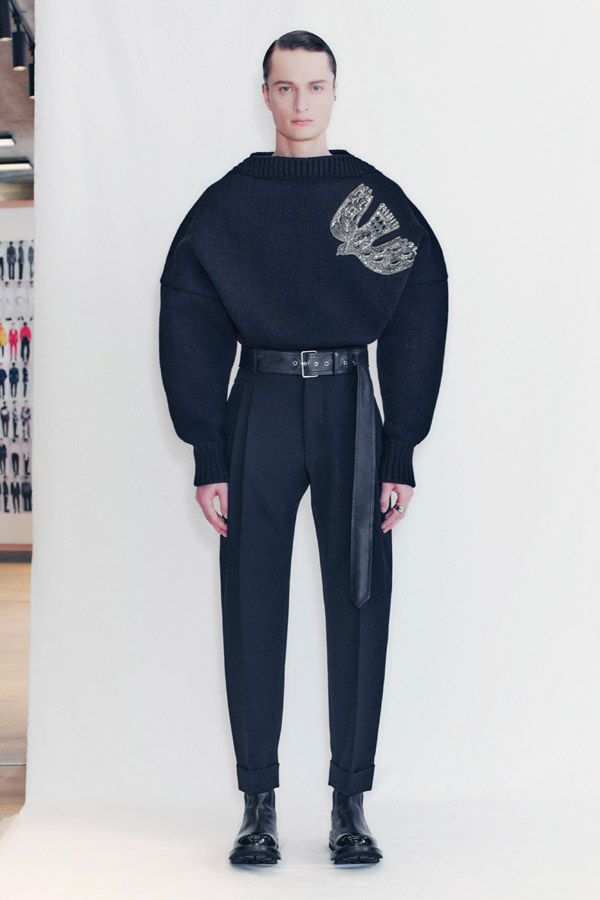
It's the official end of an era. Creative director Sarah Burton is parting ways from Alexander McQueen—a fashion house that she's worked for for close to three decades, of which the past 13 years had been at its creative helm.
"I am so proud of everything I've done and of my incredible team at Alexander McQueen. They are my family, and this has been my home for the past 26 years. I want to thank Francois-Henri Pinault for believing in me and offering me this amazing opportunity. Above all I want to thank Lee Alexander McQueen. He taught me so much and I am eternally grateful to him. I am looking forward to the future and my next chapter and will always carry this treasured time with me," reads Burton's statement.
The end of Burton's time with Alexander McQueen means that, for the first time, the creative reins could potentially be handed over to someone outside of Lee McQueen's circle. Before being appointed as creative director, Burton was considered to be McQueen's right-hand person and the only one possible to carry on the legacy of the house as well as its founder.
McQueen may be more famously known for his otherworldly and provocative creations on the runway (more so evident on his womenswear collections) but Savile Row techniques and constructions were key tenets of his menswear. Tailoring was often the foundation of every McQueen-designed Alexander McQueen menswear collection that were then embellished with disparate elements and flourishes. Burton continued the execution. Eventually, the menswear evolved in tandem with its womenswear counterpart, creating a cohesive vision that partly contributed to Alexander McQueen becoming one of Kering's big moneymakers.
Burton is scheduled to take her final bow during Paris Fashion Week later this month. But before that, we look back at her evolution of Alexander McQueen's menswear aesthetic to become the force of craftsmanship and creativity that we know today.



The early collections of Burton's Alexander McQueen menswear focused on McQueen's Scottish roots as well as elements of Britishness. The silhouettes were kept quite conventional but often peppered with instances of exaggerated volume and deconstruction.


Flora and fauna were highly favoured elements of McQueen. Burton started incorporating them into the menswear universe through prints and embroidery—the former gave rise to insect wings that adorned suiting in a myriad of colours and combinations.



Suiting and tailoring began to take a turn with conventional colours and minimalism substituted for mosaic-like prints as well as traditional jacquard and heritage patterns. This was the beginning of a more vibrant interpretation of tailoring.


While embellishments weren't completely new for Alexander McQueen menswear, Burton began to include more metallic beading and embroidery—amping up the level of craftsmanship in the house's menswear pieces. They were starkly employed against dark fabrications and often juxtaposed with streamlined cuts.



Tailoring evolved to include bolder prints that seemed to envelope the entirety of a look. At the same time, Burton nipped waists and offered elegance in the form of cuttingly sharp tailoring.



The house's Britishness was never lost, however. Opting to continuously include typically British motifs—elements of regimental military uniforms as well as fabrications—Burton grounded them with sneakers and more contemporary touches.



The level of craftsmanship exploded with embroidery becoming a key focus. Not only were they employed throughout each and every piece, they were styled with accessories and jewellery to match—a sort of more-is-more aesthetic that came across as haute-couture punk.



Sportier elements of dress were given the Alexander McQueen treatment of exploding sleeves and deconstructed-constructions. Everyday pieces like knitwear and function-first utilitywear took on avant-garde forms that added on to the creative vision of the house.


Gender lines may not have been a consideration for any Alexander McQueen creation—pre- and post-McQueen—but it became increasingly evident with the inclusion of dress-like ensembles incorporated into menswear. Softer elements of flou became quite commonplace too, running in tandem with an increased focus on couture-level embellishments.



Burton's final few menswear collections capture the essence of her time at Alexander McQueen. The blurring of gender, a steely focus on craft techniques as well tailoring at the heart of it all have been continuously refined. There's a certain element of timelessness to the creations, marked by distinctive leitmotifs—the harness and the streamlined silhouette, for example—that have become characteristically Alexander McQueen.